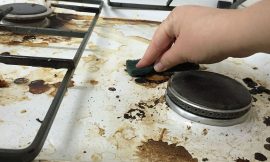
Did you know that your choice of washing machine could influence your laundry's cleanliness? It's true! Many people mistakenly believe that front-loading machines are superior, while others swear by top-loaders. But how do these differences affect mold growth? In this article, we will unpack the nuances of front-loading vs. top-loading washing machines, revealing their susceptibility to mold. Let’s dive into the mechanics that make these machines tick and find out how you can keep your laundry space mold-free!
Understanding Mold Growth in Washing Machines
When it comes to washing machines, mold growth is a common yet often overlooked issue. Understanding the conditions that promote mold is crucial. Mold thrives in warm, damp environments, which is precisely what your washing machine can become if not properly maintained.
Humidity levels play a critical role in mold development. High humidity can create a perfect breeding ground for mold, especially if the washing machine is frequently closed or not dried properly. Similarly, temperature factors contribute to this issue. Warm water wash cycles combined with the damp interior of the machine can facilitate mold spores' growth.
For both front-loading and top-loading washers, mold is a significant concern. Mold can not only lead to unpleasant odors but can also compromise your laundry and even affect your health.
Front-Loading Machines: Pros and Cons
Front-loading washing machines come with a variety of advantages. They are known for their energy efficiency and superior cleaning performance. However, they also have their drawbacks, particularly when it comes to mold.
One of the primary risks associated with front-loaders is mold build-up in the seals and gaskets. These areas often remain damp after washing, providing an ideal environment for mold growth.
To mitigate this risk, it's essential to adopt some preventive measures. One effective tip is to leave the door of the washing machine open after use. This helps air circulate and dry the interior. Additionally, regular cleaning of the seals and gaskets can significantly reduce the likelihood of mold forming.
Top-Loading Machines: Pros and Cons
Top-loading washing machines offer their own set of benefits. They are generally more user-friendly and tend to have shorter wash cycles. However, like front-loaders, they are not immune to mold issues.
One specific risk for top-loaders is the presence of stagnant water in the tub. This can happen when the machine is not used frequently or when it is overloaded with laundry.
To prevent mold growth in top-loading machines, regular maintenance is key. Running a hot water cycle without any laundry from time to time can help flush out any stagnant water. Moreover, using the hottest water settings for washing can help kill off any potential mold spores that may be lurking.
Comparative Analysis: Front-Loading vs. Top-Loading
When it comes to mold susceptibility, both front-loading and top-loading machines present unique challenges. Front-loaders are often more prone to mold in the seals due to their design, while top-loaders may deal with stagnant water.
Real user experiences highlight these challenges. Some front-loader users report persistent mold issues despite regular cleaning efforts, while top-loader users find that improper use can lead to mold growth as well.
Expert opinions suggest that mold occurrences can be influenced by detergent efficiency too. Studies indicate that certain detergents may promote mold growth more than others, underlining the importance of using suitable products for your machine type.
Maintenance Tips for Mold Prevention
To keep your washing machine fresh and mold-free, regular maintenance is essential, regardless of the type of washer you have.
Establishing effective maintenance routines is a good starting point. For both front-loading and top-loading machines, running a maintenance wash with hot water and vinegar can help clean the drum and eliminate any lingering spores.
It's also crucial to use the right detergents and additives that minimize mold growth. Some formulas are specifically designed to reduce mildew and odor.
Lastly, having a checklist for regular inspections and cleanings can be a helpful tool. Ensure you periodically check seals and gaskets, clean the detergent drawer, and run empty cycles to maintain optimal machine health and prevent mold buildup.
Conclusion
In conclusion, choosing between front-loading and top-loading washing machines can significantly impact your laundry's cleanliness and mold growth potential. While both types have advantages and drawbacks, understanding their unique characteristics can help you make an informed choice. Remember, regular maintenance is key! Don’t let mold take over—implement the tips we've shared and keep your laundry fresh. If you found this guide helpful, be sure to share it with others looking to improve their laundry habits and mold prevention methods!






